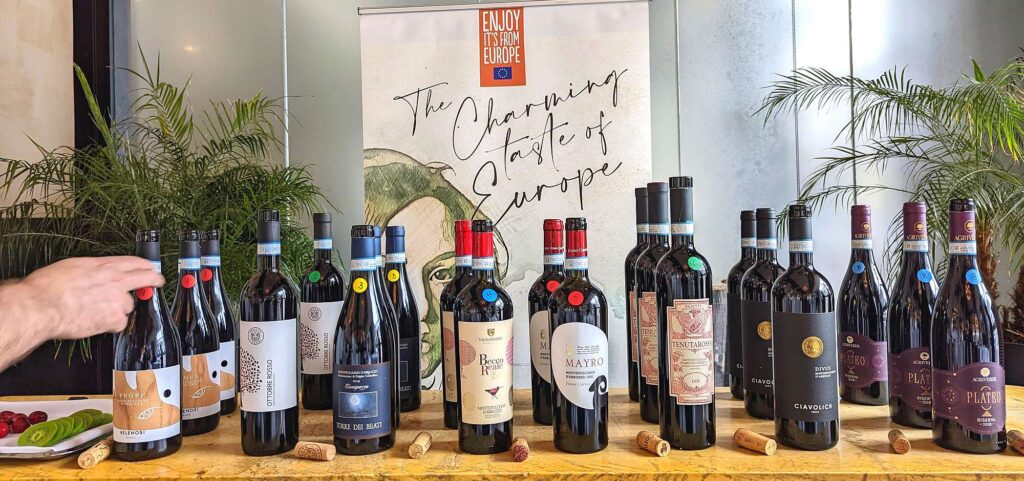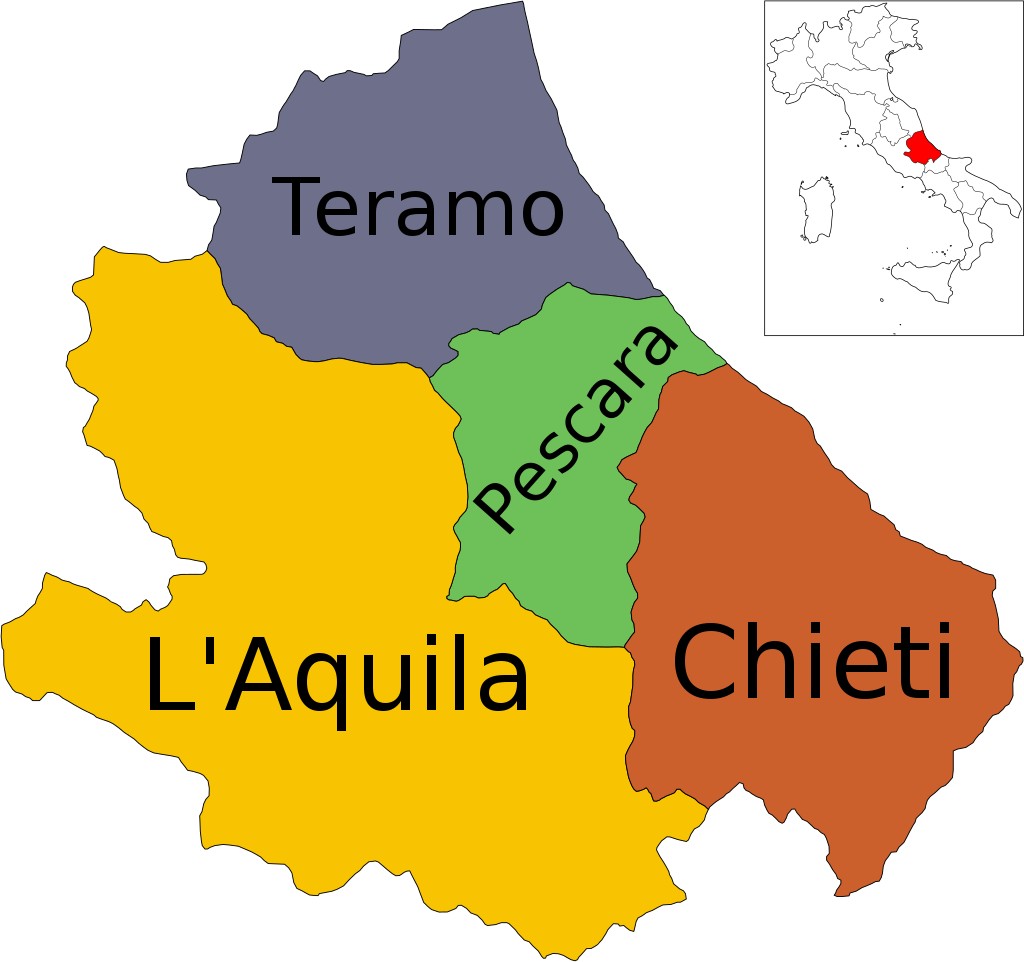
For one of the most-exported of Italian wines, Montepulciano d’Abruzzo seems to fly under the radar for most Americans. As a rule of thumb, just remember that these DOC wines represent the best value in Italian reds. They are perfect, by the way, with Thanksgiving dinner. Just make sure you read the labels carefully. Many producers give their wines fanciful names like Ottobre Rosso (Red October) or Divus (Rich). Look for the Montepulciano d’Abruzzo DOC indication on the capsule.

Unless your family hails from Abruzzo, you might not even know where the region is located. Geography says it’s central, but most references call it southern Italy because of the cultural links to the south. The main thing to remember is that Abruzzo is a green, very hilly region on the southeast side of the Apennine mountains. On the Adriatic coast, it’s south of Marche and north of Molise. The combination of the mountain rain shadow and maritine breezes on the seaside slopes create wine-growing conditions similar to Tuscany and Marche. Only 65 square miles are planted with vineyards — about half the area of Napa Valley.
I attended a Montepulciano tasting here in Boston recently with master sommelier Michael Meagher and Davide Acerra of the consortium of all the wines of Abruzzo. It was a fascinating peek at eight different Montepulciano d’Abruzzo DOC wines. They ranged from soft and rustic young wines aged only in large barrels before bottling to sophisticated wines from the 2017 vintage aged in barrique and bottle before release.
My tasting notes are full of terms like ‶black cherry,″ ‶spice,″ ‶plum,″ ‶blackberry,″ ‶tar,″ and similar terminology. They’re all accurate when describing Montepulciano d’Abruzzo. But when it comes to these wines, I think a revisionist vocabulary is in order. For starters, the wines taste like grapes. Not oak, not flowers, not other fruits. They taste like grapes.
In the case of the Montepulciano grape in Abruzzo, that means ‶sweet.″ Not as in residual sugar, but rather in the way that a good ginger cookie is sweet. It’s smooth on the palate and warming in the mouth, and it tastes good when you swallow. Honestly, this is the red wine I’ve been ordering since I outgrew Chianti in straw bottles, which is almost as long ago as the DOC was established. It’s a wine that drinks well with food at all price ranges.
In the next post, we’ll look at three Abruzzi wines — a red and two whites — from a single producer.
